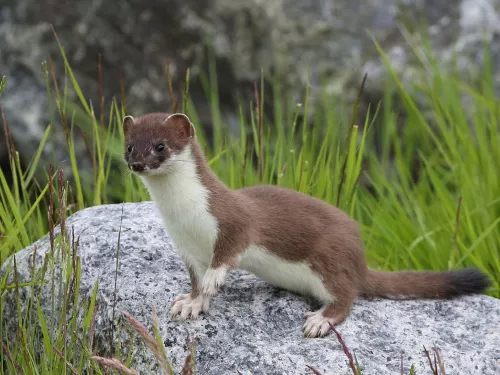St George's mushroom
A lovely pale cream colour to begin with these stout mushrooms begin to turn a buff colour and the cap surface will crack as they age.
A lovely pale cream colour to begin with these stout mushrooms begin to turn a buff colour and the cap surface will crack as they age.
The St Mark's fly is small, black and shiny. It is so-called because it emerges around St Mark's Day, April 25th. Large numbers of adults can be found in woodland edges, hedgerows, fields and wetlands.
Famous for its fearsome jaws, the stag beetle does not have the bite to match. Look for it in woods, parks and gardens in South East England in summer. Males display their massive jaws to attract females and duel with their rivals.
One of the most eye-catching sights on the rocky shore, this mind-boggling species resembling a collection of beautiful pressed flowers is actually a colony of individual animals!
The starling is a familiar garden visitor that has a beautiful purple-and-green sheen to its black feathers. It is famous for its wintry aerial displays - massive flocks can be seen wheeling over our towns and farmland.
The stinging nettle is a familiar and common plant, often firmly rooted in our memories after our first, hands-on experience - a prickling irritation that's not forgotten easily!
The stinkhorn has an unmistakeable and intense stench that has been likened to rotting meat. Its appearance is also very distinctive: a phallic, white, stem-like structure, with a brown, bell-shaped head.

The stoat is a small mustelid, related to the weasel and otter. It has an orange body, black-tipped tail and distinctive bounding gait. Spot it on grassland, heaths and in woodlands across the UK.
The stock dove looks very much like the woodpigeon, but without the white neck and wing patches. It can be spotted in woodlands and parks, and on farmland in winter, but rarely visits our gardens.
Stone curlews are unusual waders with large yellow eyes - perfect for hunting beetles at night.
The stone loach is notoriously hard to spot - not only is it mostly nocturnal, it is also well camouflaged and can partially bury itself in the riverbed. It uses its whisker-like barbels to find its prey.
The stonechat is named for its call, which sounds just like two small stones being hit together! It can be seen on heathland and boggy habitats.